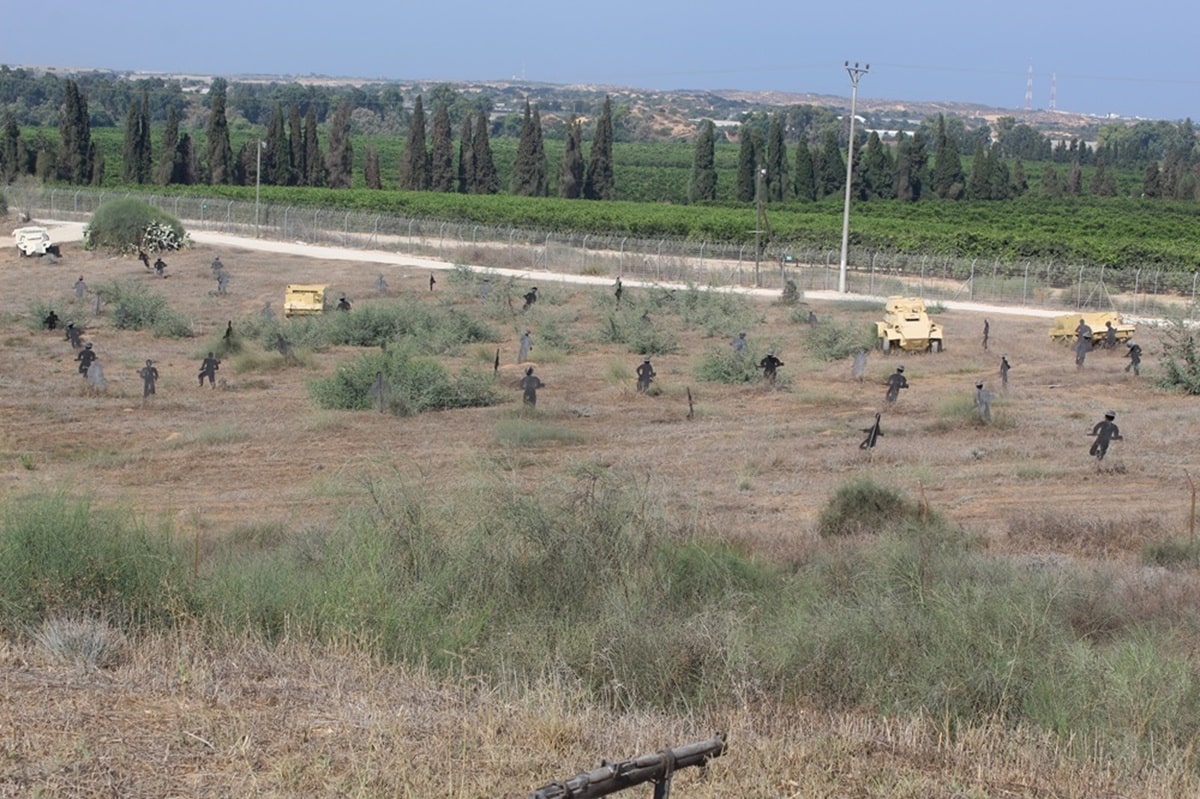
The present tour differs from the rest of the tours in our series in that most of the tours in the Heritage Tour series are associated with a single battle. This tour will visit three battle sites that together comprise the tale of one battle to halt the Egyptian enemy in its invasion of the newly founded State of Israel, with the aim of ensuring that no Jewish state will ever come to be.
Our tour will visit the battle sites of Ad Halom Bridge, Kibbutz Yad Mordechai and Kibbutz Nitzanim. This triple-site tour will give us an in-depth understanding of the southern front of Israel’s Independence War, that prevented the Egyptian army from arriving at the outskirts of the central metropolis of Tel-Aviv.
Although seven decades have passed since that battle, we’ll see that its narrative is still relevant to modern Israel, reminding us of the importance of the settlement of the country as a crucial component of the country’s defense, and how winning a war could save hostages.
Type of tour: walking + car
Estimated duration: 4-6 hours
Difficulty: easy
Departure point: The Ad Halom bridge
A state is born: buying precious time in the midst of a war
With the termination of the British mandate in Israel, Egypt wasted no time in invading the newly founded state, aiming for the bustling metropolis of Tel-Aviv at its heart, to forcibly prevent the establishment of a Jewish State in the Land of Israel.
Facing a large trained Egyptian army was only a small untrained Jewish force.
For the leaders of the Jewish settlement – now heads of the newly-born State – it was clear that the young State needs time to find its bearings, and to mobilize a proper army to withstand the Egyptian assault. Being a precious commodity during wartime, one way to buy that time was by means of what is called in military lingo a holding action.
The first battle: the demolition of the Ad Halom bridge
(Waze: Ad Halom bridge – unnamed rode, not to be confused with a street in Ashdod with the same name)
We’ll park in the site’s parking lot and head north to the obelisk – a tall stone column, which commemorates the importance of the site not only to Israel but also to the Egyptians, with the names of four fallen Egyptian soldiers inscribed in Hebrew, Arabic, English and Hieroglyphics on the obelisk. The monument was erected in the wake of the peace accord between Israel and Egypt, which led to the erection of two monuments for Egyptians soldiers on Israeli soil in return for the preservation of two monuments for Israeli soldiers in Egypt’s Sinai, dating from when Israel controlled the area.
From the obelisk we will continue to the bend in the road and walk down the path that forks to the right, leading to the observation deck and the British pillbox – a round concrete guard post from the Mandatory Palestine era. Further on we can see the Givati Brigade monument.
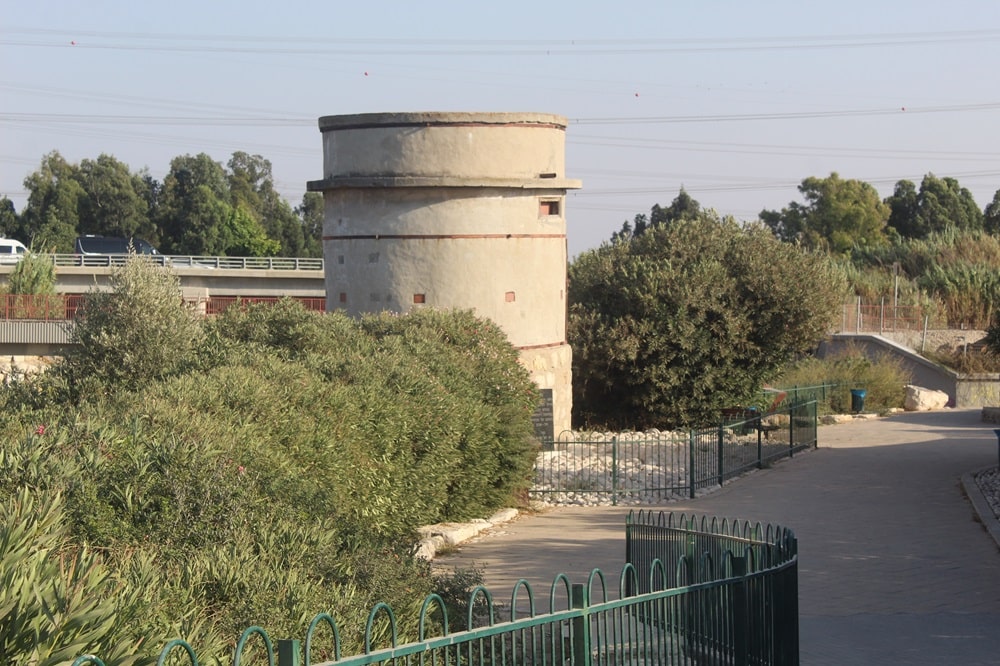
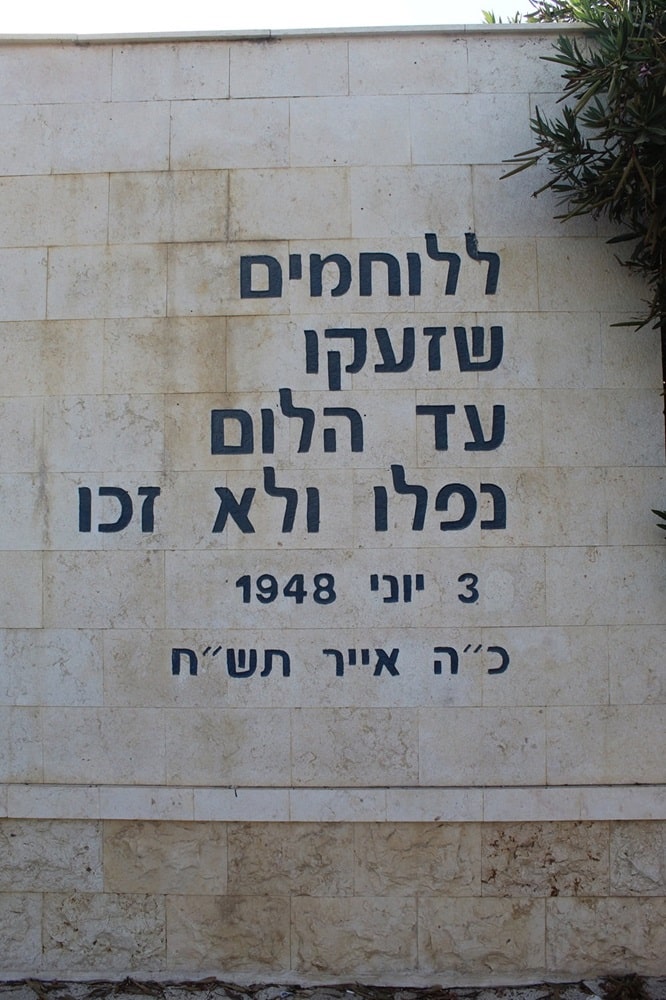
From the monument we continue walking for a short distance to the restored Ad Halom bridge. The bridge was built by the Ottomans in the late 19th century, on the original structure dating from the preceding Mamluk Empire. In 1948, the bridge was a necessary crossing for those traveling from Gaza to Tal-Aviv, thus with the objective of preventing the Egyptian forces from reaching Tel-Aviv, the Givati Brigade demolitionists set out on May 12, 1948 to blow up the bridge.
The story of the demolition is a perfect “Murphy’s Law” tale, with everything possible going wrong. Company commander from the Givati Brigade 53d Battalion, Shimon Margolin was tapped to run the operation. Margolin recounts that the plan was to make it to the site with the explosives carried by two pack mules, and blow up the bridge at 2:00 in the morning. But Margolin realized that he lacked sufficient arms for the allotted force, hence he had to request guns from the surrounding settlements. In addition, the soldiers appointed to the task force were mostly administrative personnel who lacked proper warfare training.
A short while after departure, the mules stalled and would not budge, and Margolin’s men were forced to carry the heavy load themselves. Once at the bridge, the force planted the explosives on the piers (the bottom supports) and detonated the charges, causing a massive explosion, but not the collapse of the bridge. A quick examination revealed that one of the charges failed. Margolin and one of the demolitionists had to backtrack to the bridge and repeat the entire process, finally succeeding, and the bridge came crashing down.
Margolin and his force exhibited unwavering commitment to the mission and to its success, despite the many obstacles. Mosheh Harpaz describes in his website and book “The Givati Brigade in The War of Independence”: “An order is an order, and for Margolin and his soldiers, it was only natural to place the mission above all. Margolin decided to proceed with the mission, come what may”.
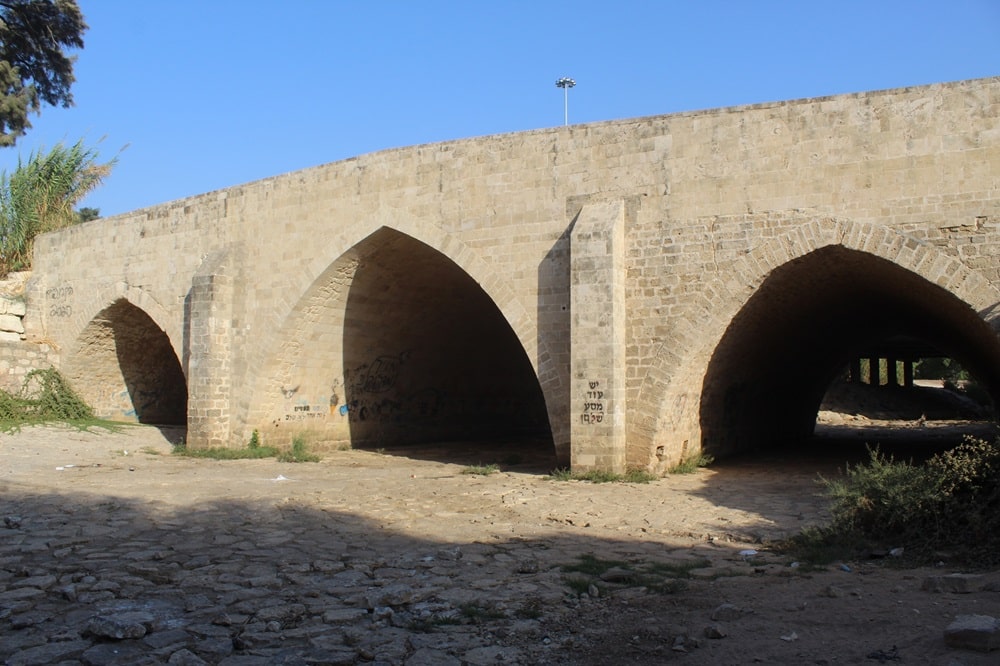
The destroyed bridge was what the Egyptian force found when they finally arrived at the site two weeks later, on May 29. While the force deliberated how to cross the Lakhish river, it was attacked by a quartet of Israeli Air Force planes. One of the planes was piloted by no other than Ezer Weitzman, later to become Israel’s seventh President. The airstrike caused only limited damage to the enemy force but its psychological effect was immense: it was the moment that the Egyptians realized that the young state had a functional air force.
The following day, two Givati companies launched an offensive against the Egyptian force situated near the bridge. Again, they were able to inflict relatively little damage. However, the assault put the enemy force into a state of defense. Several days later, Operation Pleshet was launched to drive the Egyptians out of the area. This operation failed – the area would be liberated only in Operation Yoav in the following October- but it established Egypt’s defensive doctrine in its wars against Israel. This was the northernmost point in Israel that the Egyptians had been able to reach ever since, thus the bridge’s name – Ad Halom, i.e. “Until here”.
Why have the Egyptians stalled? To understand this, we will proceed with our tour.
Yad Mordechai: Five Precious Days
(Waze: “Battle reconstruction site”)
From the parking lot we head to the entrance to the site. After paying the admission fee we will climb the battle hill. We can roam the communication trenches and view the weapons on display there. We will then climb the observation area and look out on to the battle field.
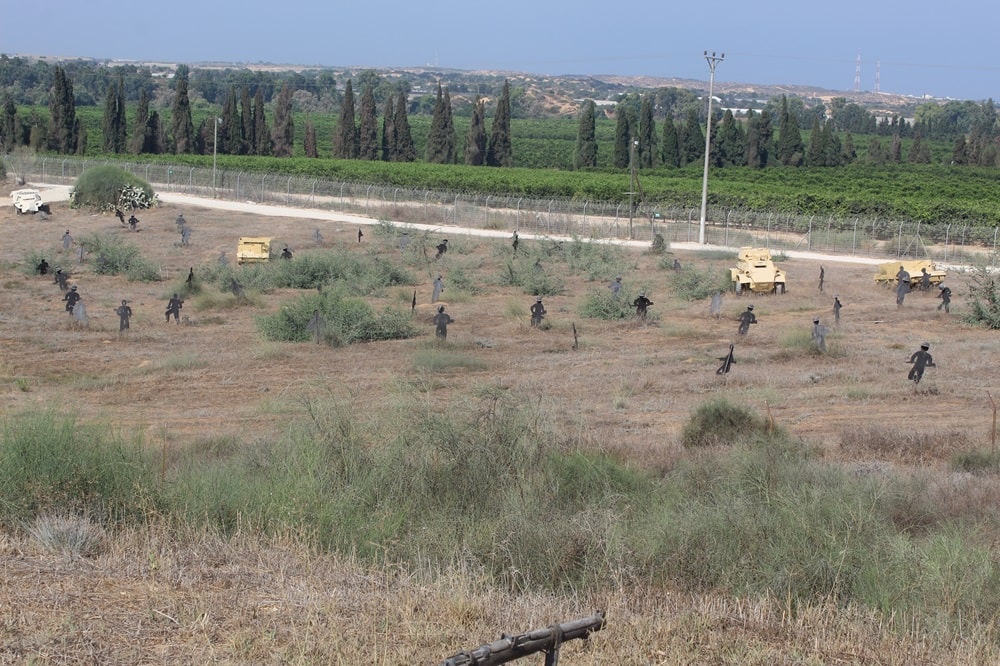
Yad Mordechai is a kibbutz south of Ashkelon, founded in December 1943. The kibbutz was named after the heroic Mordechai Anielewicz, leader of the Warsaw Ghetto uprising in the Holocaust, who was presumably killed by the Nazis only weeks before the kibbutz was founded. The kibbutz’s vantage point allowed it to control and fire at the Gaza-Majdal (today’s Ashkelon) road as well as the adjacent railway. The Egyptian army was hesitant to forge northward with a Jewish force positioned at its rear, controlling the main route to the north.
Thus, on May 19, 1948, at 7:15 in the morning, the Egyptians launched an assault on Kibbutz Yad Mordechai, demanding an hour into the assault the surrender of the kibbutz defending force. The defenders rejected the Egyptian’s demand and they renewed the assault, storming the parameter fence three times at noon. The defenders allowed the enemy to approach then fired at it from close range. Over the next several days, they doggedly repelled the Egyptians’ repeated attempts to take the hill on which the kibbutz resided.
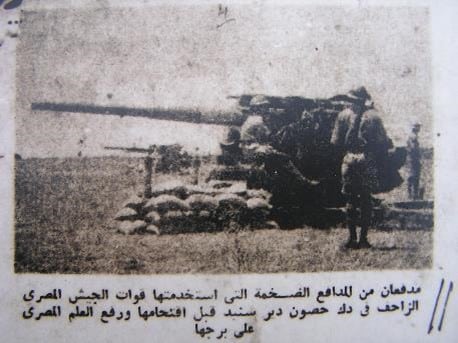
On Thursday, the Egyptians launched a new offensive – this time launching a combined effort of ground troops and artillery, which delivered a particularly heavy barrage followed by an attack of more than a thousand Egyptian troops under the cover of the artillery fire. The Egyptian tanks stormed the kibbutz and one of them, under the cover of the noise and smoke, was able to breach the hill parameter and reach stronghold 1. For an unknown reason the tank stopped dead in its tracks but the supporting infantry troops infiltrated the communications trench; however, the defenders waged a determined struggle and were able to repel the enemy.
At the end of the fight, it was clear that the besieged kibbutz members are in a dire condition. What little heavy weapons the defending force had were hit, the mine fields around the kibbutz were destroyed by the enemy artillery and the number of wounded was growing at a steady pace. The commanders realized that without significant reinforcement of fighters and weapons, they would not survive even another day of fighting, and announced that if reinforcement would not arrive by three o’clock that afternoon, they would give the command to retreat. The force was ordered not to retreat, nonetheless, at a quarter after three, the force began its retreat.
In their retreat, most of the Jewish force, carrying the wounded that were not evacuated earlier, was unable to make it through the enemy line, and when the force regrouped, it had discovered that three of them were missing: Yitzhak Rubenstein and Livkeh Shefer along with the wounded soldier they had carried on a stretcher – Benjamine Eisenberg, were unaccounted for. Several years later it was discovered that the three were captured by the Egyptians and slaughtered. In 2018, the body of Shefer was discovered in a mass grave in Kibbutz Nitzanin and only in 2022, Rubenstein’s and Eisenberg’s bodies were finally identified among the bodies found in the grave.
The story of the Yad Mordechai battle, where a small Jewish force with little arms, cut off from support, stood its ground in the face of an entire trained and skilled Egyptian division with heavy artillery, had since become in Israel’s military history an icon of bravery, commitment to the mission, and the sacrifice of life for the protection of Israel.
In 1968, the kibbutz founded the “From Holocaust to Revival” (Me’suah Le’tkuma) museum, with exhibitions on the Holocaust and the historical events that led to the Warsaw Ghetto uprising, as well as a monument commemorating Mordechai Anielewicz. In the museum are a diagram of the battle between the Egyptian army and the kibbutz we’ve visited earlier. Outside the museum building is the water tower with holes caused by the Egyptian artillery . The tower had since become an icon identified with the kibbutz.
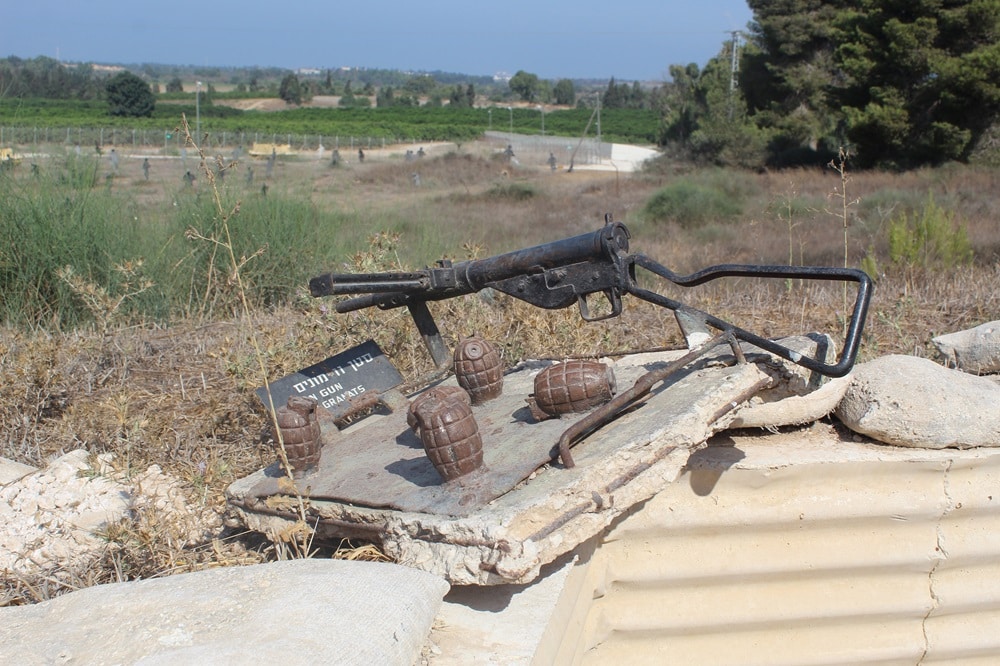
Nitzanim: The battle page of Abba Kovner
(Waze: Old Nitzanim site)
From the parking lot of the old Nitzanim site, we will walk through an archway carrying the name of Yitzhak Pundak – the commander of the southern front in the War of Independence – and reach a structure known as the “Castle”, which we will view for a few moments before circling around it and turning right to the monument for the fighting Hebrew women, where we will hear the tale of the battle.
Back to the battle: after wasting precious time at the battle of Yad Mordechai, the Egyptian force continued northward, without attempting to seize the Jewish settlements on the way, which had now become besieged and isolated. On May 28, the Egyptians passed by kibbutz Nitzanim and were halted at the demolished Ad Halom bridge.
Following the failure of Operation Pleshet, aiming to contain the Egyptian expeditionary force on the southern coastal plain, the Egyptians decided to clear their rear of Jewish forces and solidify their control of the area. Their first objective was Kibbutz Nitzanim, which was a hindrance to their campaign.
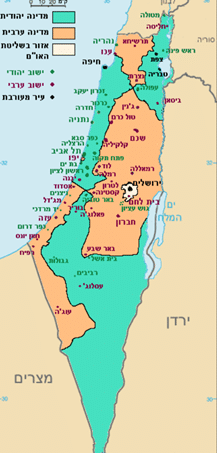
On the night between June 6-7, the Egyptians began raining a barrage of mortar shells on the kibbutz. The attack tore down the phone lines and took out some of the kibbutz’s machine guns, and communications with the brigade headquarters became intermittent at best. The first attack came in the morning, but was repelled by the Jewish force. At 11 in the morning, another attack by the Egyptian force seized the water-tower hill, and the defending force retreated to the “Castle”. At four in the afternoon, the kibbutz commander, Avraham Schwartzstein decided that the force can no longer withstand the enemy and commanded his fighters to surrender. Schwartzstein and his radio operator, Mira Ben Ari, came out to the Egyptians, waving a white cloth in surrender. Upon reaching the enemy one of the Egyptian officers drew a pistol and shot Schwartzstein. Mira Ben Ari immediately shot the officer and was killed on the spot. The rest of the Jewish defense force surrendered and were not shot.
The battle of Nitzanim was over.
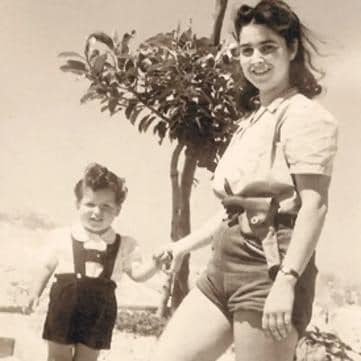
The battle of Nitzanim in itself is not unusual among the Independence War campaigns: the Egyptian enemy attacked Jewish settlements and townships, with the Jewish forces withstanding these attacks with valor until the arrival of reinforcement or surrender. However, the “Battle Page” affair in the wake of the Nitzanim battle caused a heated debate that still reverberates till this day.
The poet and author, Abba Kovner, formerly a leader of the Vilna Ghetto and a partisan in the Holocaust, served as the Givati Brigade cultural officer. Following the Nitzanim battle he published the “Battle Page” – an account of that battle’s events – in which he wrote:
“In Nitzanim [battle], the enemy might learn – for the first time – a grave and surprising fact: the Jewish settlement’s defense line can be breached, suppressed and taken prisoner within hours”. Abba Kovner resolutely stated that it is better to fall in the trenches of one’s home than surrender to a murderous invader; “to surrender – as long as the body lives and the last bullet breaths in its chamber – is shameful; walking towards the enemy capture – dishonor and death!”
Granted, Kovner stated at the opening of his essay that he lacked a credible account of the battle and specific details thereof, and assured that he does not aim to raise allegations against anyone, yet points an accusing finger at the people of Nitzanim who chose surrender over death. The Battle Page was widely circulated and created the wrong impression that the defenders of Nitzanim did not give their all in the battle. His words tainted the memory of the battle’s dead and the prisoners who returned from the Egyptian captivity received a cold and hostile welcome. The people of Nitzanim were furious that their kibbutz received special treatment in the form of the Battle Page that flung dirt at them for surrendering. Much of the anger was aimed at the commander of the 53d battalion and commander of the Nitzanim sector, Yitzhak Pundak, who, they claimed, failed to send them the critical reinforcements during the battle.
In response to these remarks, IDF Chief of Staff Yaakov Dori addressed a letter to the kibbutz members, saying:
“The difficult circumstances of the Nitzanim members’ struggle, the bitter isolation of the fighters, the lack of contact with the home front, the shortage of ammunition and food, and on top of it all – the many losses in that defense force, are faithful testimony to a desperate battle such that honors all those who fought there until the last bullet.”
Prime Minister David Ben-Gurion also wrote about the people of Nitzanim:
“No lofty tale fails. Even if at that moment it does not bring the desired results. The fearless stance of defenders who risk their lives and die for their calling, is in itself a supreme human victory. And together with the whole Nation of Israel, I bow my head before the heroes of Nitzanim who fell. Their death was not in vain.”
As oppose to the large publicity of Abba Kovner’s Battle Page, these letters of the Chief of Staff and the Prime Minister were private and were not published for years to come, and the people of Nitzanim struggled for many years with that label of traitors.
Thirty-five years after the Battle of Nitzanim, in 1983, Yitzhak Pundak and Shimon Avidan (who was the Givati brigade commander during the War of Independence and signed Abba Kovner’s Battle Page) visited Kibbutz Nitzanim. In a discussion with kibbutz members, some of whom fought in the battle, Avidan refused to apologize for publishing the Battle Page, claiming that its purpose was to prevent a decline of the morale in Israel’s public. However, he agreed that the headline should have been: “The Fall of Nitzanim – Givati’s Failure.” Pundak fostered a warm relationship with the kibbutz, and in 1991 (at the age of 73) wrote to the kibbutz members asking their permission to be buried in the kibbutz cemetery:
“I am approaching the age of eighty, and I thought to myself that if I did not succeed in properly protecting Nitzanim when it was fighting for its life, isolated and forgotten from the hearts of all, it is only fitting that at least when my day comes, I should be at the side of soldiers who fell in the cruel battle.”
In addition, at the age of 91 Pundak donated an archway to the old Nitzanim site in memory of his wife. In 2017, Yitzhak Pundak passed away at the age of 104. He was laid to rest in the cemetery of Nitzanim near his wife and his fallen soldiers.
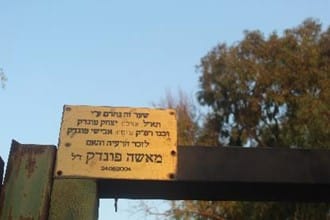
This visit in Kibbutz Nitzanim was an opportunity to address the heavy responsibility resting on the shoulders of the commander, who must determine when the achievement of a mission is necessary even at a great cost, or not, with the underlying principle for such a decision being that the commitment to a mission is not an end onto itself, but a means to achieving an objective and completing a mission.
Three battles – crucial contribution
The three battles made a decisive contribution to determining the nature of the campaign on the southern front during the War of Independence. The three battles gave the Jewish community the vital time to equip, arm and mobilize. During the battles, regardless of their outcome, the fighters showed commitment to the mission, a drive for victory, the ability to face danger and the willingness to sacrifice their lives for the newborn homeland.
Moreover, the battles underscored the importance of the Jewish settlement enterprise in the Land of Israel – they were the key to delaying and halting the Egyptian army, and had it not been for the settlements, which fiercely defended the borders, the War of Independence could have ended very differently.
The Egyptian army planned to capture Yad Mordechai within just three hours, but found itself stalled for five days. During this time, a shipment of Messerschmitt planes arrived in Israel, which were sent forthwith to attack the stalled Egyptian forces as they reached the Ad Halom bridge. At the same time, the battle of Nitzanim delayed many Egyptian forces in the kibbutz area – forces that were planning to break forward towards Tel Aviv and prevent the implementation of the Declaration of Independence of the State of Israel.
At the end of the war, the State of Israel was able to leverage its victory and had all of its soldiers and civilians who had been captured by Egypt return in exchange for the release of prisoners from the Arab armies in Israeli hands.

